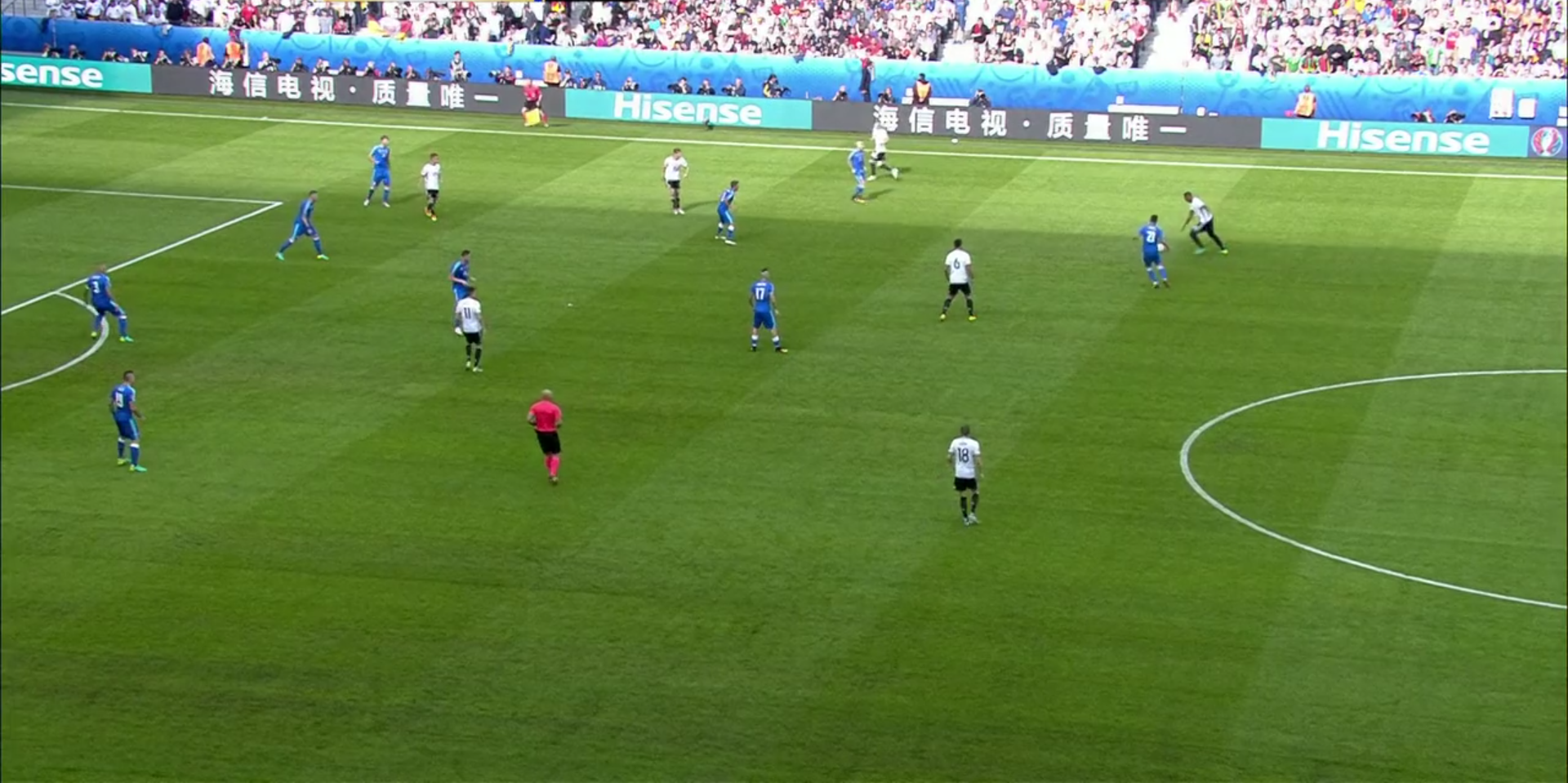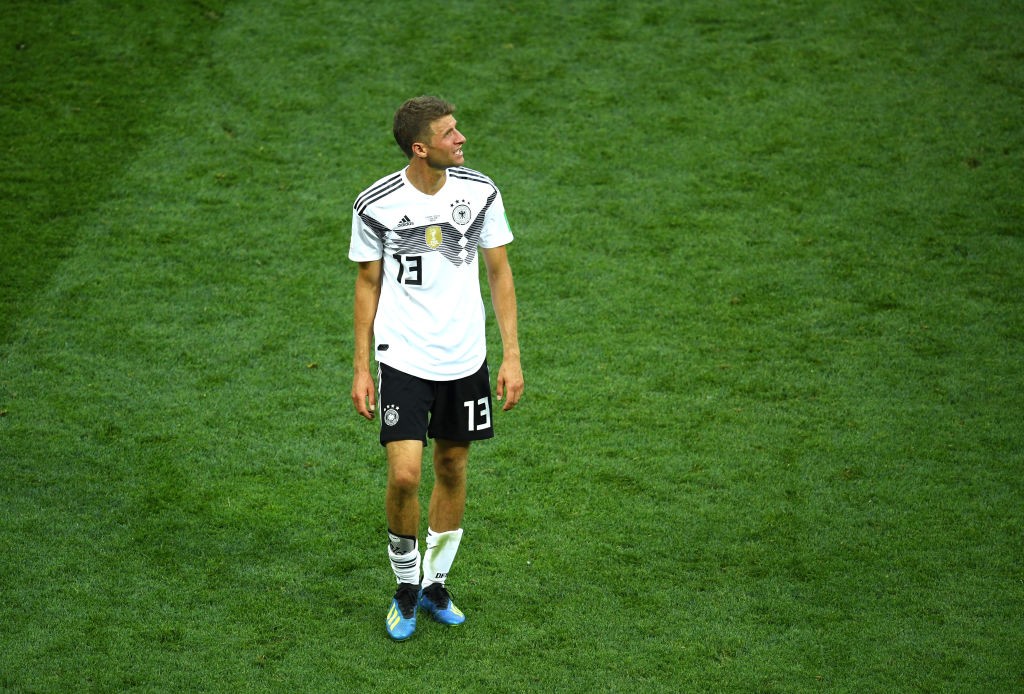Rishad Bharucha looks back at the intense Round of 16 match at Euro 2016, which ended Germany 3-0 Slovakia.
Germany’s dominant display against a resilient Northern Ireland team suggested that the signs were indeed present that they would be able to mount a challenge for the European championship. While this victory by a single goal was enough and certainly efficient by German standards, they will need more goals as they face sterner tests. It is promising that there is a strong core and continuity from their World Cup success, that will provide invaluable experience to help them progress in the tournament.
Slovakia lost their opening group game to Wales by two goals to one and won their following game against Russia with the same scoreline. A scoreless draw against England showed that they were capable of defending well against good opposition, but facing the world champions who were looking to book a place in the quarter finals would be a different challenge altogether.
Line Ups:
Germany (4-2-3-1): Neuer; Kimmich, Boateng, Hummels, Hector; Kroos, Khedira; Müller, Özil, Draxler; Gomez
Slovakia (4-3-3): Kozacik; Pekarik, Skrtel, Durica, Gyomber; Skriniar, Hamsik, Hrosovsky; Weiss, Kucka, Duris
Germany – Offensive Organization
Over the course of this tournament, teams have either avoided closing down Hummels and Boateng when they receive the ball from Neuer, or failed with any attempts to win the ball in Germany’s defensive third. The two center backs trust Neuer’s excellent control and passing ability and are never afraid to play back to him under pressure. If there is no pressure, the ball was quickly played to Khedira who looks to play forward. When Boateng won the ball in the center circle, he would often play a direct long pass over the top.

Boateng finds space in midfield and plays a long pass over the Slovakian defence
Early on in the first half, with the lack of pressure from Slovakia, it seemed like the build up from the back or any passage of midfield possession would somehow always end up with Kroos playing a diagonal ball to Hector on the left wing, before the full back either crossed quickly or dribbled past the defenders to the edge of the box before cutting back to a late runner. Özil combined well with the full backs, especially Hector, given his tendency to drift towards the left. During counter attacks, he dropped to the center to play either the penultimate pass or the final ball.

Hector received plenty of service via diagonal passes from midfield
Slovakia – Defensive Organization
Slovakia had a simple defensive tactic – maintain two lines of four behind the ball with a defensive midfielder in between those lines. This did not seem to frustrate the Germans, and Slovakia would have done well to pick their moments to press Kroos and Khedira to win the ball instead of standing off completely.

Slovakia defending deep with two lines of four
They were also not very quick at recovering their positioning and would sometimes be out of position when they should have been covering a man. They did not double up on Draxler or Hector when they were out wide and the two Germans found much success down their respective flanks, especially on the left when Draxler set up Gomez for one of the goals.
Germany – Defensive Organization
In the few instances, where Germany conceded possession, they found themselves winning the ball back very close to where they lost it. They pressed high up in midfield to win the ball back and prevent counter attacks. When Slovakia tried to play through the middle, the back four was compact enough to intercept any passes behind them. The German center backs were not adequately tested in the air, especially in their own box.

German midfielders pressing early in the center of the field.
Slovakia – Offensive Organization
Ths Slovakian midfield was very static in the first half. There was little to no movement off the ball and at times they seemed to occupy spaces similar to when they were defending, except that they turned to face Germany’s goal. When they tried to build from the back, the central midfielders often took more than two touches which gave the German midfielders plenty of time to close them down.

When Slovakia managed to string a purposeful attack, the lack of quality in the final ball let them down
They could have shown more urgency in the counter attack, and they lacked an end product when playing short, vertical passes through the middle. The German defense was able to stay compact and clear any danger. In the second half, Slovakia had some luck attacking down their right flank, but the lack of end product let them down once more.
Conclusion
Overall, Germany asserted their dominance and cruised to the quarter finals. Against Northern Ireland, victory by a single goal showed that they were efficient, but this result showed that they were capable of being the lethal team that won the World Cup two years ago in Brazil.
Written by Rishad Bharucha
- Tactical Analysis: Schalke 0-1 Leverkusen | Sending off ruins Schalke plans - December 19, 2016
- Tactical Analysis: Dortmund 4-1 Mönchengladbach |Dortmund’s patience and clinical finishing - December 8, 2016
- Tactical Analysis: Wolfsburg 1-5 Borussia Dortmund | Tuchel’s men win emphatically - September 24, 2016

























































